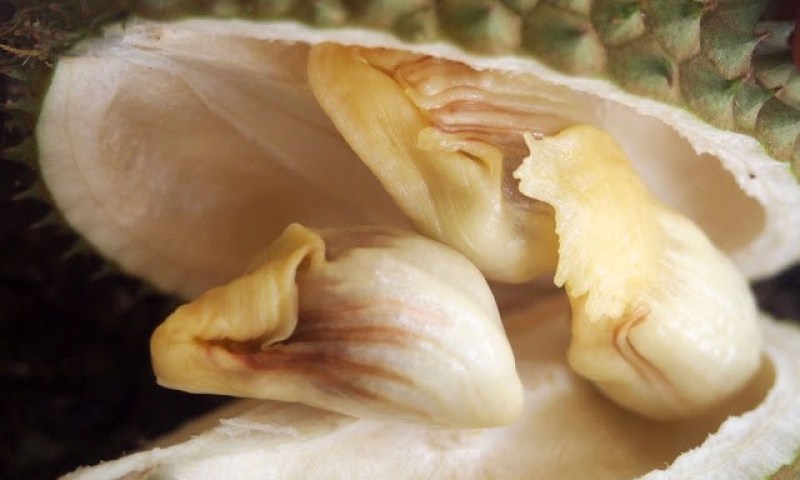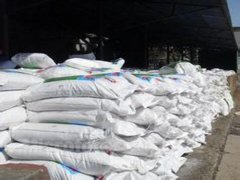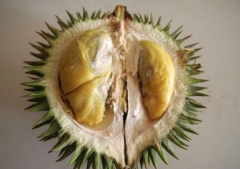According to the durian variety tortoise durian, the taste characteristics of durian varieties growing on tree trunks and roots.
Luckily, durian was found twice in Borneo because it is one of the rarest species of durian. Many people do not think it is edible because it has a strong musk flavor when it is mature. It tastes sweet and juicy, in sharp contrast to the usually heavy durian. This is a reason to appreciate this jungle durian. Its reputation is that it does not grow on branches, but sprouts from trunks and roots.
From the outside, the fruit of tortoise durian looks like a small version of commonly cultivated durian (durio zibethinus). Now imagine 80 or 100 durians gathered around the base of a tree. It's a little different. It's worth going to the jungle to watch.
When fully mature, the durian falls unopened to the forest ground. This is not a long-term decline! The durian Rob and I tasted were not fully mature, although our guide assured us that it would only be one day away from falling. Instead of removing the durian from the tree, our guide inserted the tip of his knife into the bottom of the durian and twisted it slightly. The whole fruit opens along five seams, revealing caramel yellow flesh.
I was surprised by the texture of the meat, which is completely different from the ordinary thick cream of ordinary durian. The slender pulp has the texture of jackfruit-fibrous, with only one touch waxy-the vanilla-flavored juice cracked when chewed. It tastes light and sweet, almost like caramel cream candy, with a hint of pineapple. I think it's very pleasant.
As for the smell, I don't see what the fuss is. It may be because our durian is not very mature and lacks the extreme stench of fully ripe fruit, but as a durian lover, I think only a better smell will get better.
Distribution and season
Tortoise durian grows in the jungles of Borneo. It will never be planted, although in some areas people leave them in the backyard as curiosity. According to sources, it is most common in Ulu Dusun near Sandakan and Kampung Lingkungan in Brunei. Occasionally appear in the market, such as the fruit market in Brunei Tutong on Thursday morning.
This is relatively vague, which means that the season of tortoise durian is unknown and varies from region to region. When Rob and I found a tree in Upper Capuas in West Kalimantan, the fruit was small and immature. Just two weeks later, we tasted the last fruit in Tenom Agricultural Park.
This tree is the shortest of the wild durian. It is only 10-25 meters long, while most other species are only 40-50 meters long. It has been reported that people use the durian as a rootstock and plant other species on it to get fruit at the top and bottom of the tree. This is an interesting idea.

- Prev

Taiwan's agriculture continues to suffer from natural disasters, and fertilizer prices are reduced by 500 yuan per metric ton.
Since the beginning of this year, natural disasters have spread frequently. President Tsai ing-wen mentioned this during a discussion with farmers at the Yunlin Story Hall on the 3rd, and said that in order to sympathize with the farmers' hard work, Taiwan Fertilizer will now reduce the factory price of commonly used chemical fertilizers by 500 yuan per metric ton, or about 40 kilograms of fertilizer.
- Next

Small durian varieties introduction Austrian durian, Austrian durian has what kind of characteristics of the function
Durian is a beautiful spring-green durian with long and sometimes curly spikes. The spike is broader and more intuitive than that. Most durians, far from the fruit body, resemble stout tentacles. It rarely grows more than one pound (500 grams) and no more than two (1 kilogram).
Related
- A course of planting techniques and methods on how to grow carrots
- How to plant the latest tulips?
- Is it better to pick tea in the morning or in the afternoon? When is the best time for tea to be picked? what is the third or fifth tea?
- Launch Yuanxiao Happy combination Haocha + Tea Yuan healthy Taste
- Penghu Tourism "Fireworks 20 Parade with You"
- 2022 West Lake Happiness holds "Digital Revitalization Voucher" and draws iphone13 and laptop.
- Banqiao Fuzhou social houses are designed to change start-up combined with police elimination to create a safe and livable environment
- The convenient measure of "mechanical weeding" in Xinbei has been abused and the Agriculture Bureau has imposed heavy penalties on the illegal land consolidation.
- Changgeng University Joins Hands with Four Memory Factories to Rescue Memory Talent Shortage
- The list of Taiwan's top 100 MVP managers is listed by the Director-General of the Farmers' Association of Sanxia District.

